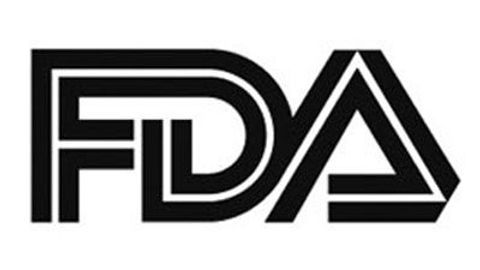FDA Grants Orphan Drug Designation to AVA6000 in Soft Tissue Sarcoma
The FDA granted an orphan drug designation to AVA6000 for the treatment of patients with soft tissue sarcoma.

The FDA has granted an orphan drug designation to AVA6000 for the treatment of patients with soft tissue sarcoma, according to Avacta Group plc.1
AVA6000 is a fibroblast activation protein α (FAP)-activated pro-drug of doxorubicin and a therapeutic product that has been modified using pre|CISION technology. The agent is made up of a doxorubicin molecule which is covalently bonded to a dipeptide and designed to be susceptible to hydrolysis by FAP, but resistant to hydrolysis by closely related and wider mammalian peptidases.2
The agent can directly deliver doxorubicin to the tumor microenvironment, while exposing the patient to fewer associated adverse events (AEs). The primary mechanism of action of doxorubicin is thought to encompass stabilization of a topoisomerase-II-DNA cleavable complex through non-specific DNA-intercalation.
“We are delighted to receive orphan drug designation from the FDA for AVA6000, which is a reflection of the high quality of the preclinical data and the potential benefit the pre|CISION platform can bring to cancer patients,” said Alastair Smith, MD, chief executive officer of Avacta Group, in a press release. “This designation provides tax credits and other incentives for drug developers addressing rare diseases. Most notably, the orphan drug designation will give Avacta, if AVA600 is approved for treatment of soft tissue sarcoma, 7 years of market exclusivity in the United States, which is a significant commercial advantage.”
An open-label, first-in-human, phase 1 study (NCT04969835) is investigating the safety, tolerability, pharmacokinetics, and early efficacy of AVA6000 in patients with advanced and/or metastatic solid tumors.3
Patients aged 18 years and older with histologically or cytologically confirmed locally advanced and/or metastatic pancreatic cancer, colorectal cancer, non–small cell lung cancer, squamous cell carcinoma of the head and neck, ovarian cancer, breast cancer, soft tissue sarcoma, and bladder cancer who have relapsed or progressed on standard-of-care treatment, or who are intolerant or not amenable to such treatment, are eligible for enrollment in the trial.
Additional requirements for inclusion in the study are to have a life expectancy of longer than 12 weeks, an ECOG performance status of 0 or 1, have recovered from all acute toxic effects of any prior radiotherapy, chemotherapy, or surgical procedure, and acceptable hematologic, liver, and renal function.
Within the phase 1a portion of the trial, eligible patients will be administered escalating doses of AVA6000 following a 3+3 design. This part will begin with a dose of 80 mg/m2 once every 3 weeks starting on day 1 of cycle 1, and treatment will be given until disease progression, unacceptable toxicities, withdrawal from treatment for other reasons, maximum lifetime cumulative exposure to doxorubicin, or death.
Then, phase 1b of the trial will administer patients the recommended phase 2 dose (RP2D) of AVA6000 once every 3 weeks beginning on day 1 of cycle 1. Based on the evaluation of the phase 1a findings, 1 of 3 tumor types will be selected for further study.
The primary endpoints of the study are the number of patients with dose-limiting toxicities (DLTs), percentage of DLTs of AVA6000 during the DLT period, identification of the maximum tolerated dose or the RP2D, and the percentage of patients with AEs at the RP2D of the agent in tumor-specific expansion arms. Secondary endpoints consist of maximum drug concentration of AVA6000 and doxorubicin, area under the concentration compared with the time curve of the 2 agents, elimination half-life of the agents, renal clearance of the agents, objective response rate, duration of response, progression-free survival, and overall survival.
In August 2021, the first patient enrolled in the trial received their first dose of AVA6000. Then in June 2022, it was announced that the phase 1 trial would advance to the third dose cohort after a review done by a Safety Data Monitoring Committee (SDMC) examined safety data from the second cohort of the trial who received AVA6000 at 120 mg/m2. Announcing in a press release, the committee recommended that the trial continue as planned and escalate to the next dose of 160 mg/m2.4
“The recommendation from the SDMC to initiate dosing in cohort 3 with 160 mg/m2 of AVA6000 is an endorsement of the emerging safety and tolerability profile in the patients enrolled in this study to date,” Neil Bell, chief development officer of Avacta, stated in the press release. “We look forward to providing additional updates as the dose-escalation phase of the trial progresses.”
References
AVA6000 receives orphan drug designation from the US Food and Drug Administration. News release. Avacta Group plc. September 5, 2022. Accessed September 8, 2022. https://bit.ly/3BpbE0t
McLaughlin F, Poplawski SE, Sanford DG, etal. Abstract 1815: AVA6000, a novel precision medicine, targeted to the tumor microenvironment via fibroblast activation protein (FAP) mediated cleavage. Cancer Res. 2022;82(suppl 12):1815. doi:10.1158/1538-7445.AM2022-1815
A study evaluating the safety, pharmacokinetics and early efficacy of AVA6000 in solid tumors. ClinicalTrials.gov. Updated April 6, 2022. Accessed September 8, 2022. https://clinicaltrials.gov/ct2/show/NCT04969835
Avacta announces second dose escalation in the phase I clinical study of AVA6000 pro-doxorubicin. News release. Avacta Group plc. June 29, 2022. Accessed September 8, 2022. https://bit.ly/3ewWq06








